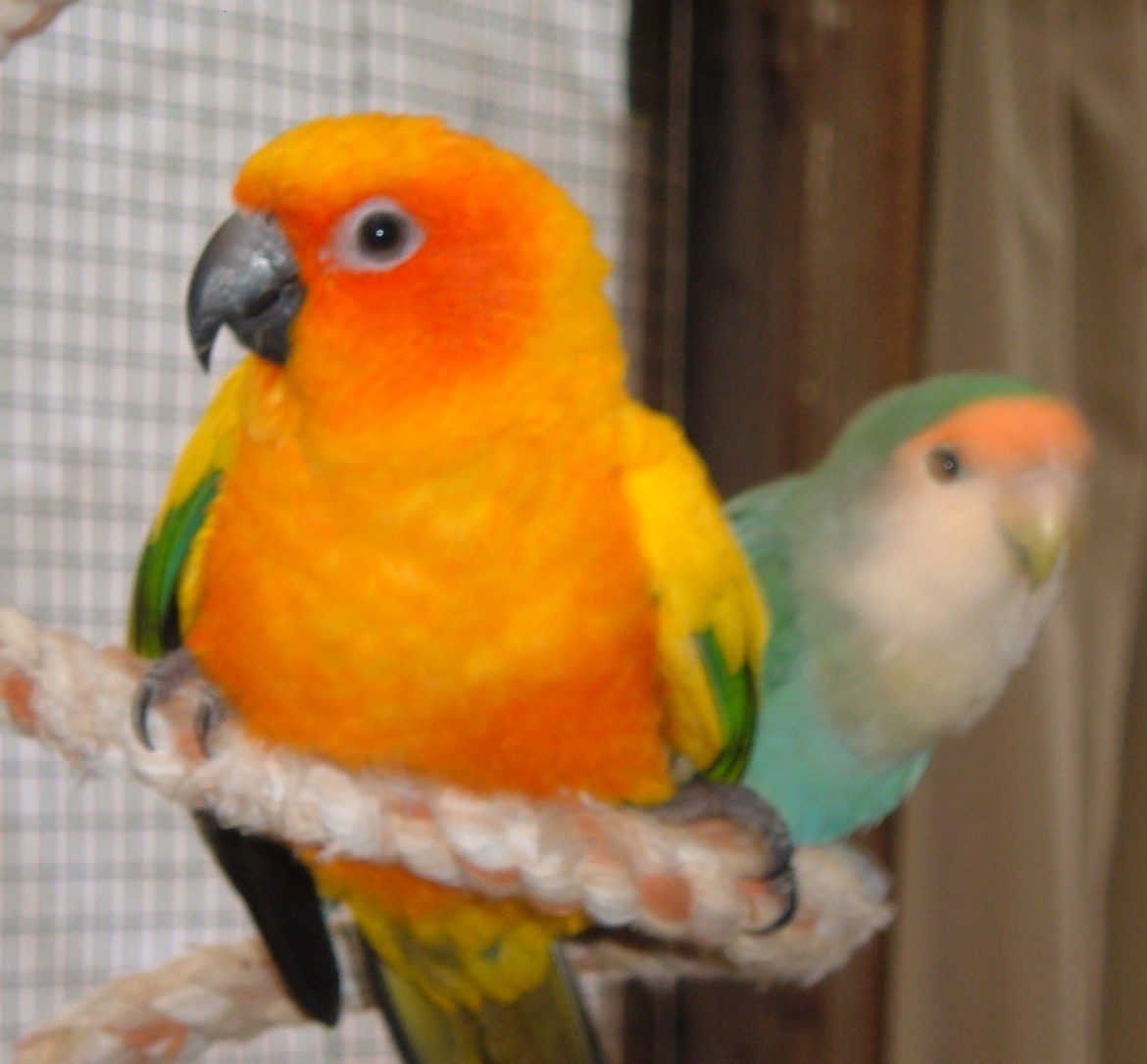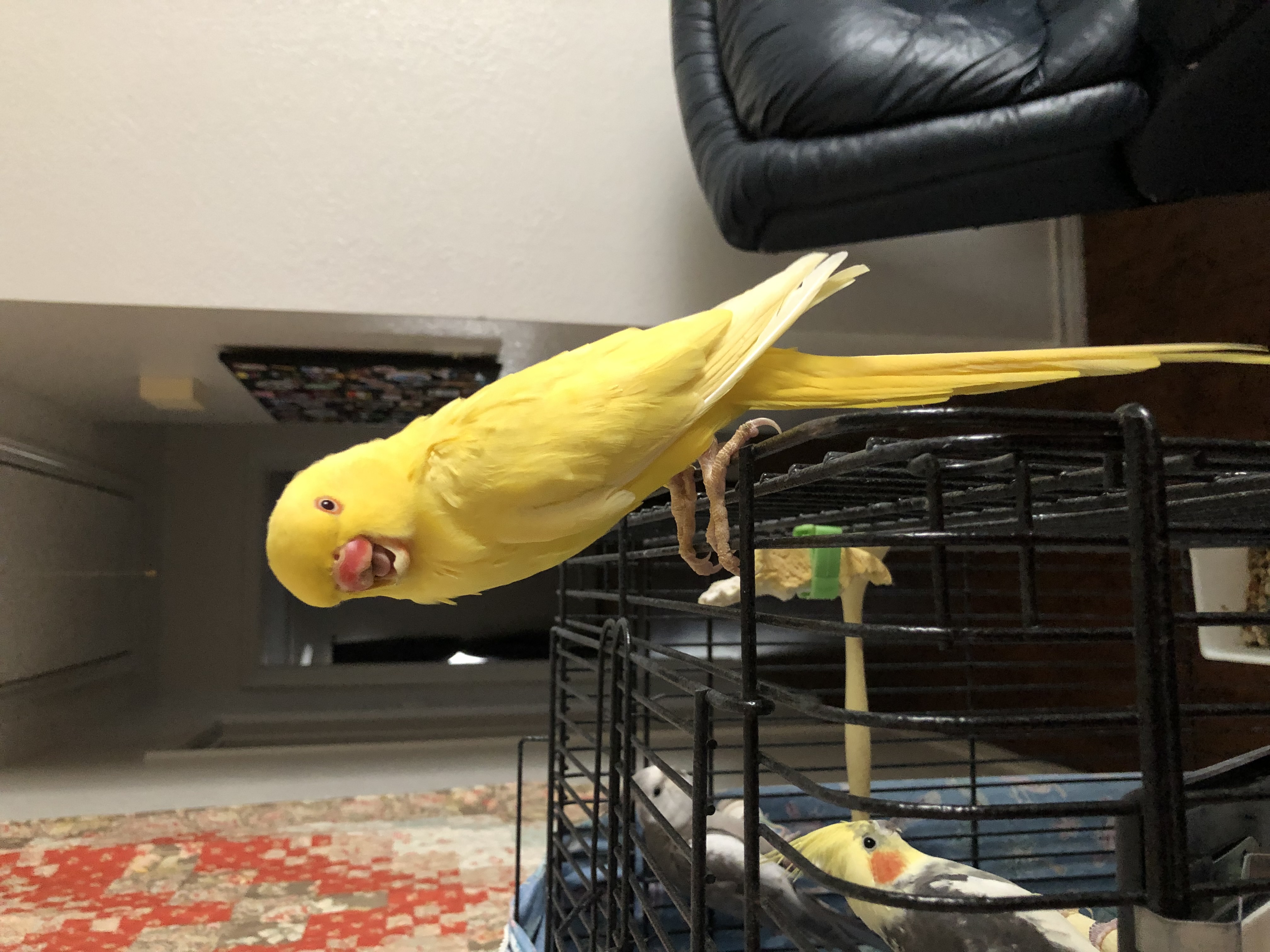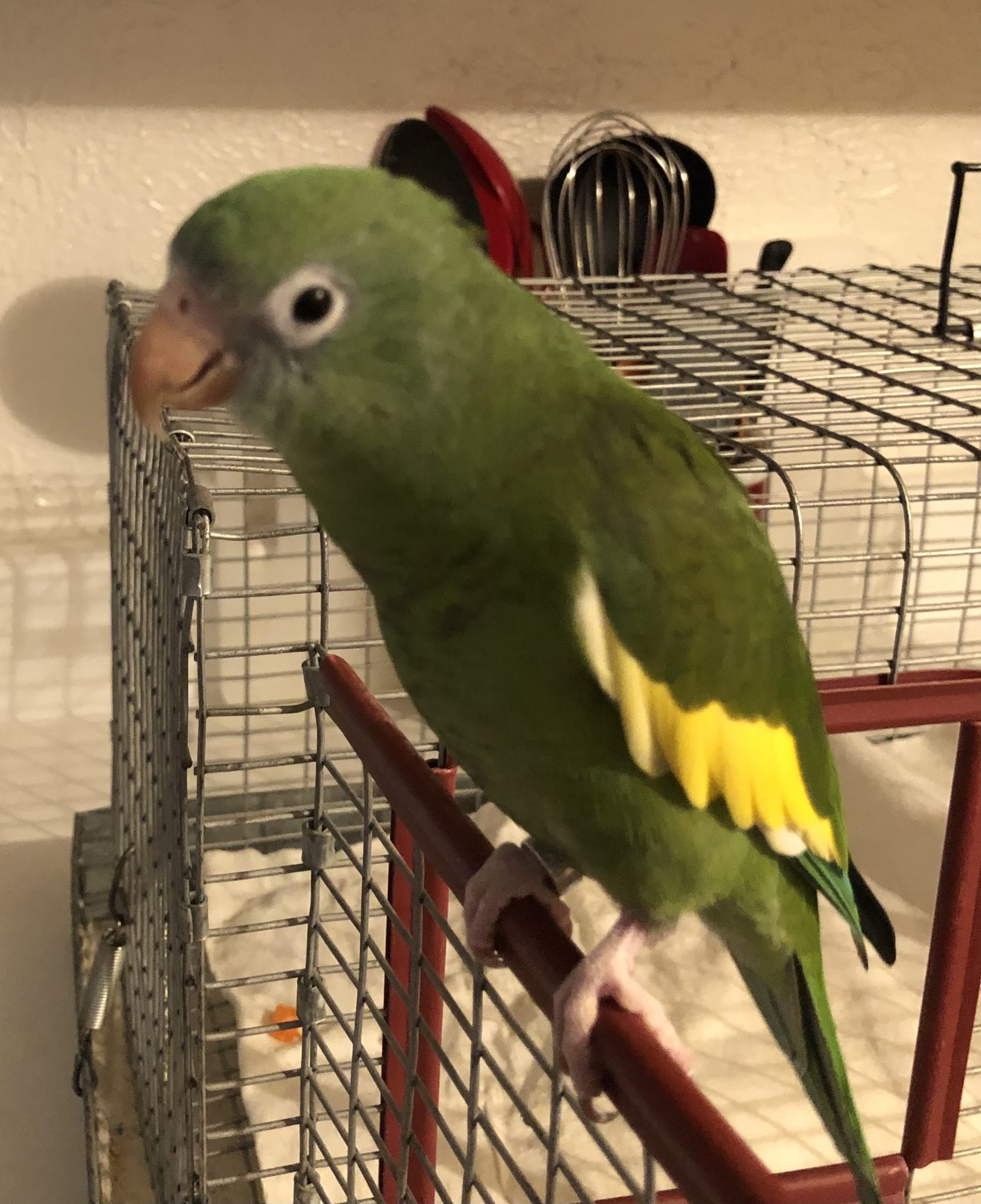By Dr. Melody M. Potter
You have decided to adopt a parrot, a great, wonderful, noble decision; but now you are home with this bird. So what do you do next?
First, you set up a cage in a quiet spot out of the main traffic area in your home. Inside the cage place a bowl of water and a bowl half filled with food. Place the bird in the cage, latch the door, and then…STOP!
For two days, simply leave the bird alone to adapt to it’s new surroundings. Keep your hands away from the cage, don’t bang on the sides of the cage, and don’t try to get the bird to step up on your hand. I promise–you WILL get bitten if you do! You are a stranger to this creature and it needs time to decide if you are friend or foe.
I like the analogy of a foster child. Since your friend has a child and you like everything about your friend’s child, you decide you want a child just like your friend’s. But you couldn’t get a new child, so you got a “used” child. And you naturally expect that, since they are both children and look alike, they will act alike. Unfortunately, this way of thinking is NOT REALISTIC, either with a child or with a “used” parrot.
Every secondhand bird is different and has a different background. You will want to take your time, and give the parrot time, so you can watch each other and learn about each other. If you are unsure about what to you with the parrot, can you even imagine how the parrot feels about what to do with you?
When in doubt, always err on the side of caution. For instance, don’t take the bird outside to fly, because it won’t come back. Always think about what would happen in nature. Would the parrot take a bubble bath, eat pizza, or chew on electrical cords in the wild? No, so don’t do it at your house.
Use common sense when learning the bird’s preferences. Feed the bird enough for a single feeding in the morning and evening. Then reduce the next feeding by nearly the amount of uneaten food in its dish. It will not starve while you are learning how to care for it.
You will figure it all out over time and that is what I am asking you to do. Give it time. The first 48 hours need to be calm, quiet times for the bird to begin adjusting to this HUGE change. It will take a lifetime to learn about each other.





